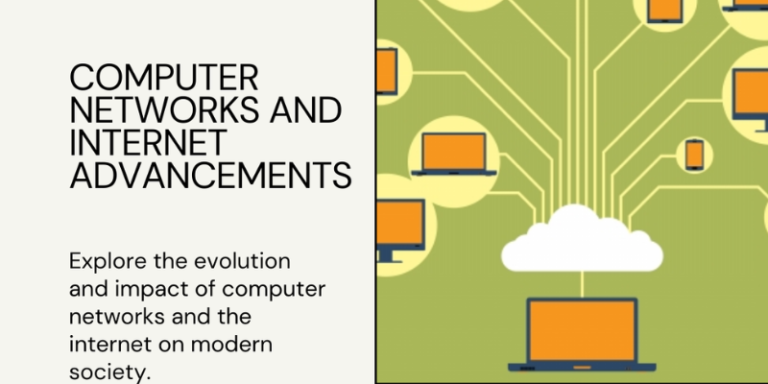Computer networks, including the Internet, are indispensable for communication and information exchange in today’s connected world. They enable the seamless transfer of data between computers and other devices, facilitating various applications from personal communication to business transactions. This article explores the design, implementation, and management of networks, highlighting key concepts such as network protocols, architecture, security, and performance.
Network Architecture and Protocols
Network Architecture
The architecture of computer networks encompasses the layout and structure of interconnected devices. The fundamental model is the OSI (Open Systems Interconnection) model, which divides network functions into seven layers: physical, data link, network, transport, session, presentation, and application. This layered approach allows for modular design and troubleshooting. Kurose and Ross (2017) detail the OSI model’s relevance, explaining how each layer serves a specific function in data transmission (Kurose & Ross, 2017).
Network Protocols
Protocols are essential for ensuring reliable communication over networks. They define rules and conventions for data exchange. The TCP/IP (Transmission Control Protocol/Internet Protocol) suite is the cornerstone of Internet communication, comprising several protocols that manage different aspects of data transmission. HTTP (Hypertext Transfer Protocol), for instance, governs web communication, while SMTP (Simple Mail Transfer Protocol) handles email transmission. The robust framework provided by these protocols is crucial for maintaining the Internet’s functionality (Tanenbaum & Wetherall, 2011).
Security in Computer Networks
Network Security Challenges
With the proliferation of online services, network security has become paramount. Networks are vulnerable to various threats, including malware, phishing attacks, and DDoS (Distributed Denial of Service) attacks. These threats can compromise sensitive information, disrupt services, and cause significant financial losses. Stallings (2016) emphasises the need for robust security measures to protect network infrastructure and data integrity (Stallings, 2016).
Security Measures
Effective security strategies include encryption, firewalls, intrusion detection systems, and secure network protocols. Encryption ensures that data is readable only by authorised parties, while firewalls block unauthorised access to networks. Intrusion detection systems monitor network traffic for suspicious activities, and secure protocols like HTTPS (Hypertext Transfer Protocol Secure) provide an additional layer of security for online transactions. Implementing these measures helps mitigate risks and enhances the overall security of computer networks (Kurose & Ross, 2017).
Performance and Management
Network Performance
Network performance is a critical aspect that affects the user experience. Key performance indicators include bandwidth, latency, and throughput. Bandwidth refers to the maximum data transfer rate, latency is the delay in data transmission, and throughput is the actual rate of successful data transfer. Optimising these factors is essential for ensuring efficient network operation, particularly in high-demand environments such as data centres and cloud services (Tanenbaum & Wetherall, 2011).
Network Management
Managing computer networks involves monitoring and maintaining network infrastructure to ensure optimal performance and reliability. Network administrators use various tools and techniques to detect issues, perform routine maintenance, and upgrade systems. Network management protocols like SNMP (Simple Network Management Protocol) facilitate the monitoring and control of network devices. Effective management practices are vital for sustaining the functionality and scalability of networks (Stallings, 2016).
The Future of Computer Networks
Emerging Technologies
The future of computer networks is shaped by emerging technologies such as 5G, IoT (Internet of Things), and AI (Artificial Intelligence). 5G technology promises higher speeds and lower latency, enabling new applications like augmented reality and autonomous vehicles. IoT connects a vast array of devices, creating smart environments and enhancing automation. AI improves network management and security through advanced analytics and automated decision-making (Andrews et al., 2014).
Challenges and Opportunities
While these advancements offer significant benefits, they also present challenges such as increased complexity and the need for enhanced security measures. Addressing these challenges requires continuous innovation and collaboration among researchers, industry professionals, and policymakers. The ongoing evolution of computer networks will undoubtedly drive further progress and transform various aspects of daily life and business operations (Kurose & Ross, 2017).
Computer networks and the Internet are the backbone of modern communication and information exchange. Understanding their architecture, protocols, security, and performance is essential for leveraging their full potential. As technology continues to evolve, addressing the challenges and seizing the opportunities presented by emerging trends will be crucial for the continued growth and advancement of computer networks.
References
Andrews, J. G., Buzzi, S., Choi, W., Hanly, S. V., Lozano, A., Soong, A. C., & Zhang, J. C. (2014) “What will 5G be?”. IEEE Journal on Selected Areas in Communications. 32(6), pp. 1065-1082.
Kurose, J. F., & Ross, K. W. (2017) Computer Networking: A Top-Down Approach. 7th ed. Pearson.
Stallings, W. (2016) Foundations of Modern Networking: SDN, NFV, QoE, IoT, and Cloud. Addison-Wesley.
Tanenbaum, A. S., & Wetherall, D. J. (2011) Computer Networks. 5th ed. Prentice Hall.









